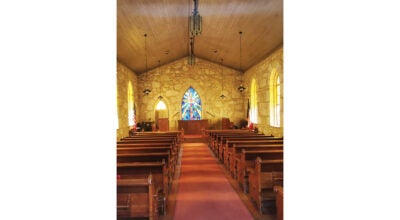Forest funds help boost area budgets
Published 6:00 am Monday, February 26, 2001
p>
Southwest Mississippi counties directly reaped the benefits ofthe Homochitto National Forest to the tune of almost $4 millionlast year, U.S. Forest Service officials said.
p>
Southwest Mississippi counties directly reaped the benefits ofthe Homochitto National Forest to the tune of almost $4 millionlast year, U.S. Forest Service officials said.
Local communities with national forest lands receive a share ofrevenue from timber sales and other resource-related funds. Sevenarea counties will split $3.8 million, based on a county’s acreagein the Homochitto National Forest, as their share of the funds.
At $1.9 million, Franklin County is the largest beneficiary ofthe forest funds. That amount was based on the county’s having95,504 acres in the forest.
“It’s extremely important,” said Carl Ray Lehmann, FranklinCounty Board of Supervisors president, about the forestrevenue.
Lehmann said there are less than 8,000 people in the county andonly about 3,000 of those pay property taxes. With that tax base,the forest revenue makes up a big part of the county’s budget.
Half of the county’s share of forest funds goes to support itsschool system, Lehmann said.
“We take the other and divide it between the five districts sowe can all work from it,” the supervisor said.
Statewide, national forest revenue amounted to $6.5 million forcounties. Mississippi has 1.1 million acres of national forestlands.
Homochitto National Forest counties saw the bulk of the paymentsand also had the highest per acre payment rate at $20.29, forestofficials said.
Lincoln County’s share of the forest funds last year amounted to$161,047. The county has 7,936 acres in the Homochitto NationalForest, which crosses the northwestern part of the county.
David Fields, Lincoln County comptroller, said the money isdivided 25 percent each to the county and city school districts andthe remaining 50 percent is used for county road work.
“That money is to be spent on roads, but it is the board’sdiscretion on whether it will be spent in the district where theforest is or countywide,” Fields said, adding that supervisors haveelected to use the funds countywide on a percentage basis for eachdistrict.
Forest service officials said the number of timber sales onnational forest lands has declined in recent years, thus raisinglocal community concerns about funding levels.
A law passed last year will allow counties to decide if theywant to continue receiving funds under the current system or choosethe average of the three highest payments made to states from1986-1999. Officials said counties that choose the new formula andget more than $100,000 are required to reserve between 15 and 20percent for forest restoration, maintenance and stewardshipprojects.
Lehmann mentioned the new formula when talking about the forestfunds. He indicated supervisors were reviewing their options onwhich formula would be better for the county.
“We haven’t decided which way we’re going yet,” Lehmannsaid.





